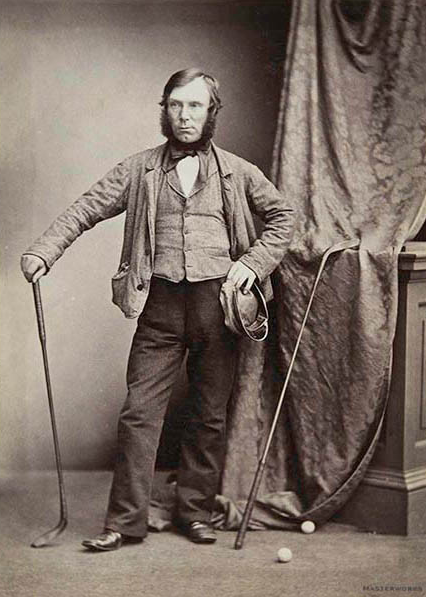This is the first installment of the Behind the Tartan series, written by Graylyn Loomis. To read more from Graylyn, have a look at his course reviews website.
It is fitting that one of the most formative figures in the game of golf comes from one of the oldest Scottish clans. It is also fitting that his clan was known for their fierce hardiness - something of precious value when 19th century Scottish life expectancy was only 45 years. He wore the traditional Robertson tartan of his forefathers, and he was foundational in shaping golf as we know it today. Many people have never heard his name.
Allan Robertson was born in St Andrews, Scotland in 1815. He inherited a century old golf equipment company that he grew into the premier golf club and ball manufacturer in the world. His skilled craftsmen spent their days creating “feathery” golf balls, which were made by stuffing boiled goose feathers into a small leather pouch. These labor intensive and relatively fragile golf balls were the best available for nearly 200 years before gutta percha balls took over.
As a golf professional living in St Andrews, Robertson acted as a caddy, instructor, and equipment manufacturer. Professionals of the day subsidized their income through wagers while on the golf course, and Robertson was widely considered the best golfer of his day.
In 1835, a fourteen-year-old boy named Tom Morris walked into Robertson’s shop seeking an apprenticeship. The relationship between the two grew steadily, and they quickly became a formidable force playing money matches together around Scotland. Robertson mentored the young Old Tom Morris, and legend has it that the two never lost a match while playing together.
Robertson’s impact on golf reached well beyond equipment as he enlarged the greens on the St Andrews Old Course to accommodate for golf’s growing popularity. These early attempts at golf course architecture proved so popular that Robertson was asked to design a course from scratch.
In 1842, Morris accompanied Robertson on a trip across the Firth of Tay to lay out a new golf course in the Scottish town of Carnoustie. The ten holes created on that trip planted course architecture seeds in Morris, who would go on to create some of the greatest links golf courses in the world. Morris would eventually return to that very site later in his career to lengthen Carnoustie Golf Links. Although Robertson and Old Tom Morris eventually had a falling out, the master shaped the early golf mind of his apprentice - a mind that is now synonymous with golf course architecture, early greenskeeping, and Scottish golf as a whole.
In the years leading up to his death, Robertson was regarded as the best golfer in all of Scotland. Once he died in 1859, it was decided that a tournament would be held to find a new “Champion Golf of the Year.” In 1860 this tournament was held at Prestwick Golf Cub, marking the first Open Championship.
Robertson’s contributions to the game of golf cannot be overstated. When you look at the Robertson tartan headcover, see past the beautiful red, green, and blue pattern. Look deeper and appreciate the history passed from ancient clan, to family, to golf shop owner who was so fundamental in shaping the game we all love.
Photo credits to Masterworks Golf.



